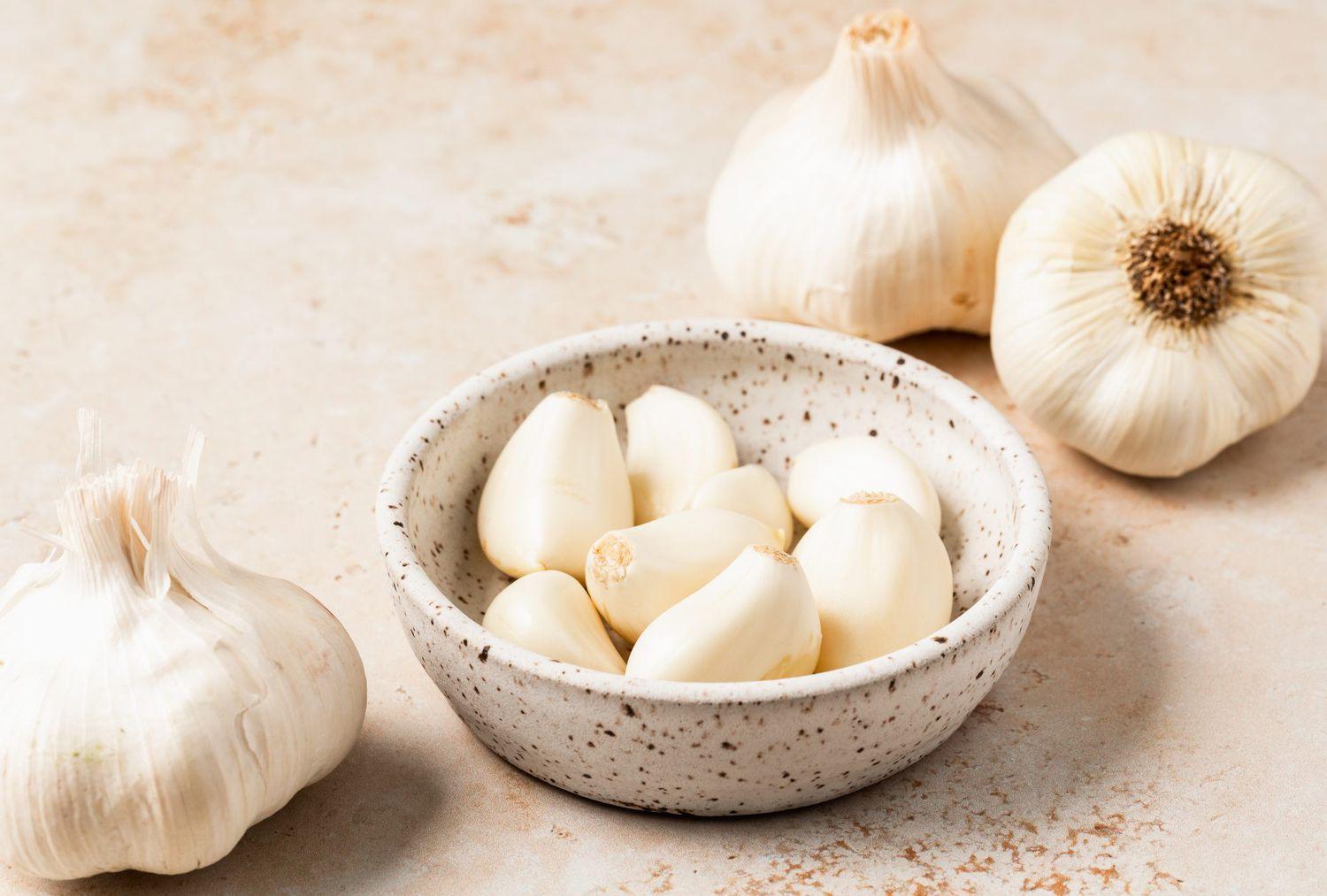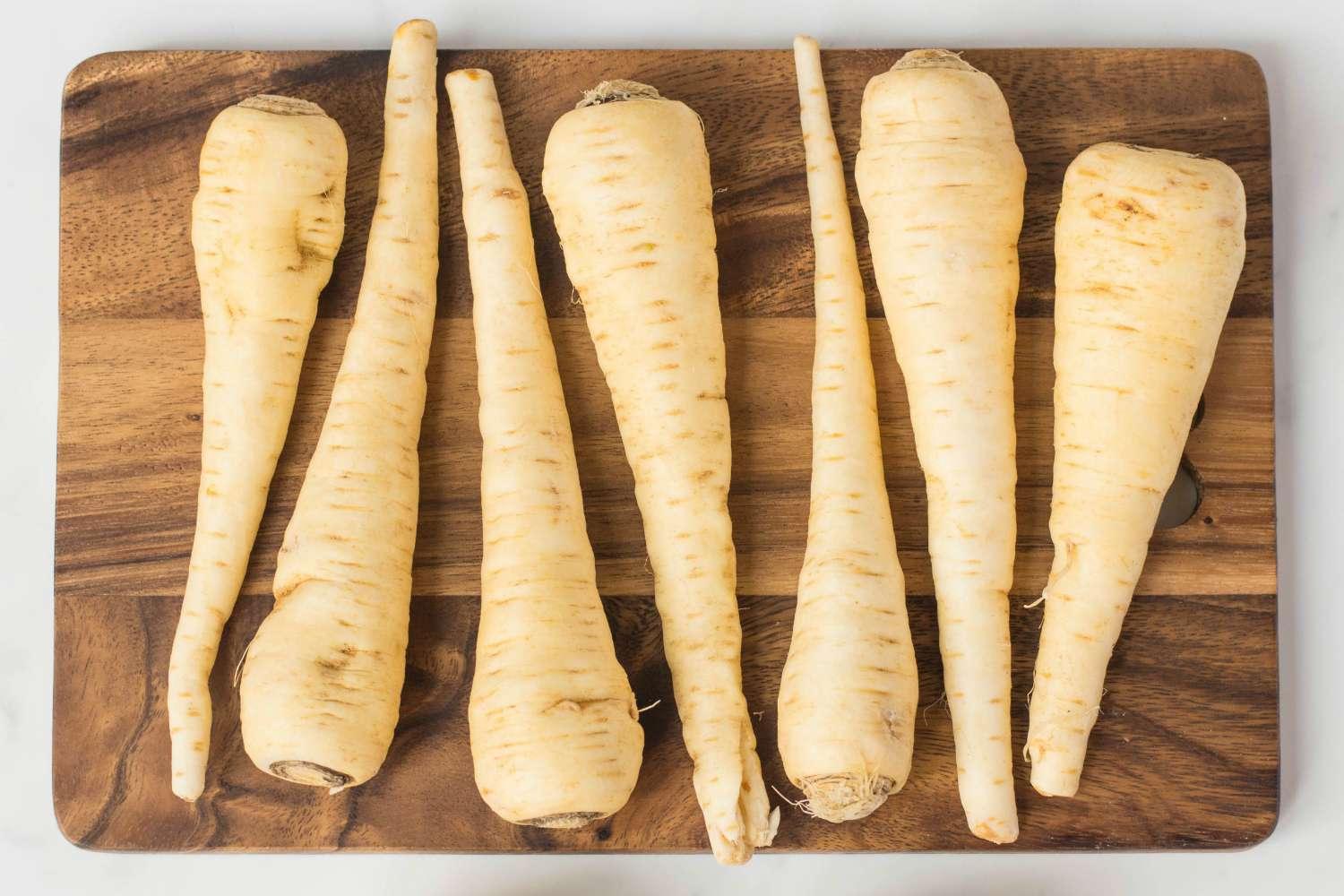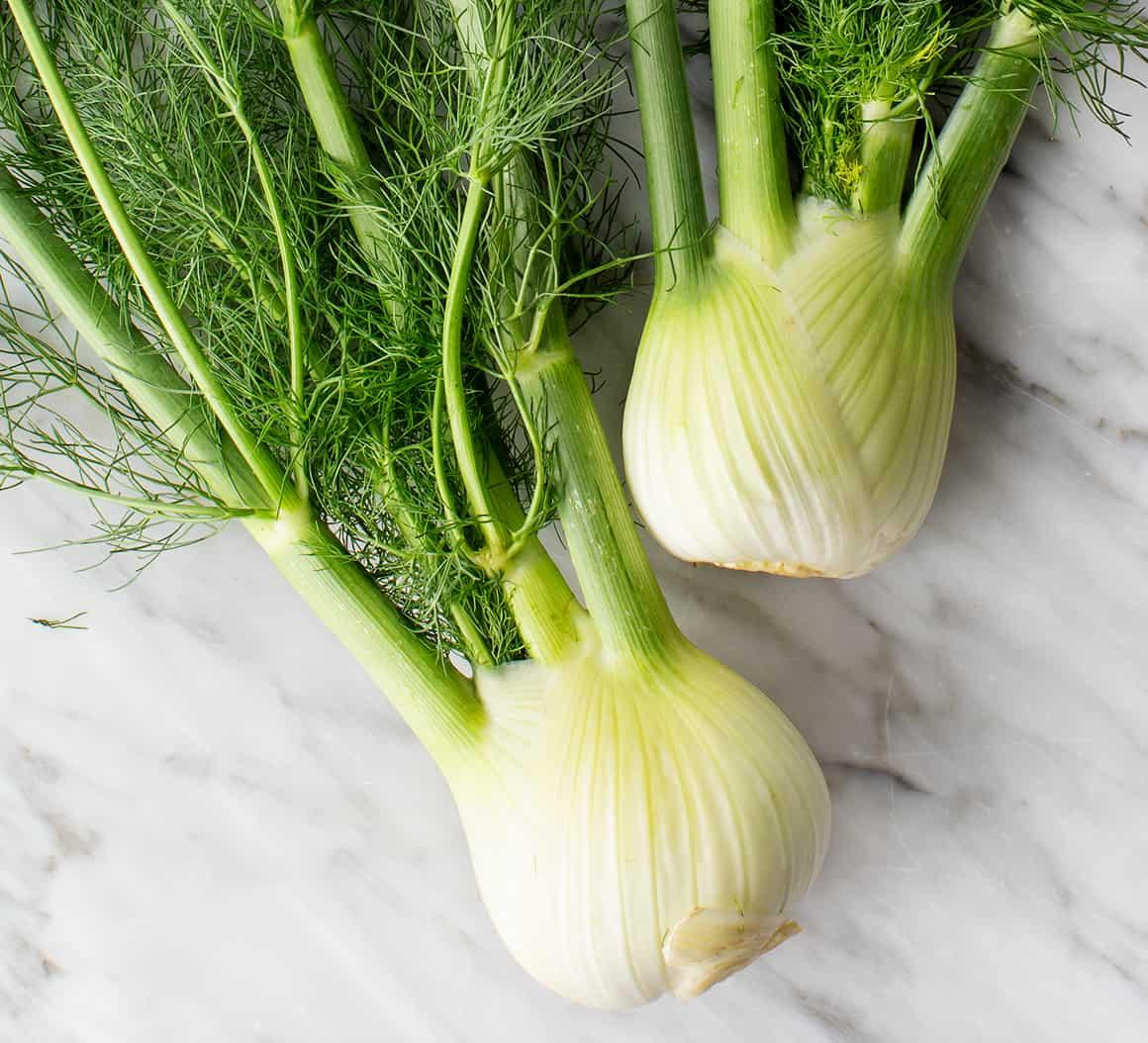Top 25 Nutrient-Rich Winter Vegetables You Should Try

Winter brings chilly weather and a craving for comfort food. But did you know it’s also the perfect time to enjoy a variety of nutrient-packed vegetables?
Many people struggle to maintain a healthy diet during the colder months. Don’t worry; I’ve got you covered!
In this blog post, I’ll introduce you to 25 winter vegetables that are not only tasty but also packed with essential nutrients.
These veggies will help you stay healthy and energized throughout the season. From leafy greens to root vegetables, I’ll show you how to incorporate these nutritional powerhouses into your meals.
Get ready to discover new flavors and boost your winter wellness with these fantastic vegetable options!
List of Winter Vegetables to Enjoy
1. Kale

Kale is a leafy green vegetable that originated in the eastern Mediterranean. It’s known for its deep green color, slightly bitter taste, and rich, hearty texture that holds up well in various dishes.
Kale is also highly nutritious, making it a popular choice for health-conscious diets.
- Scientific Name:Brassica oleracea var. sabellica
- Nutritional Value: High in Vitamins A, C, and K, fiber, calcium, and antioxidants.
- How to Cook: Best enjoyed sautéed, steamed, or added to soups and stews.
- Why It’s Great for Winter: Kale is frost-resistant and becomes sweeter after exposure to cold temperatures, making it ideal for winter harvests.
2. Brussels Sprouts

Brussels sprouts are small, leafy green buds that grow along a thick stalk. They are known for their slightly bitter flavor and nutty undertones when cooked.
Brussels sprouts are often roasted to enhance their natural sweetness and are a staple in winter meals.
- Scientific Name:Brassica oleracea var. gemmifera
- Nutritional Value: Rich in Vitamins C, K, folate, and fiber.
- How to Cook: Roast, sauté, or steam to bring out their natural sweetness.
- Why It’s Great for Winter: They thrive in cool weather and become sweeter after the first frost.
3. Cabbage

Cabbage is a leafy green or purple vegetable grown for its dense-leaved heads. It’s a versatile vegetable with a crisp texture and slightly peppery flavor, making it ideal for a variety of dishes, from salads to soups.
- Scientific Name:Brassica oleracea var. capitata
- Nutritional Value: Vitamin C, K, fiber, and folate.
- How to Cook: Ideal for making slaws, soups, or fermented sauerkraut.
- Why It’s Great for Winter: Cabbage can withstand cold temperatures, making it perfect for winter dishes.
4. Broccoli

Broccoli is a green vegetable resembling a small tree with a firm, crunchy texture, and a slightly bitter taste.
It’s a nutritious addition to any meal, offering a range of vitamins and minerals beneficial during winter.
- Scientific Name:Brassica oleracea var. italica
- Nutritional Value: Packed with Vitamins C, K, folate, and fiber.
- How to Cook: Best steamed, roasted, or added to stir-fries.
- Why It’s Great for Winter: It’s a cold-tolerant crop that retains its nutritional value during winter.
5. Carrots

Carrots are widely cultivated root vegetables from Persia. They are known for their vibrant orange color, crisp texture, and sweet taste.
Carrots are versatile in many recipes, offering flavor and nutritional value.
- Scientific Name:Daucus carota subsp. sativus
- Nutritional Value: High in Vitamin A, beta-carotene, fiber, and antioxidants.
- How to Cook: Can be eaten raw, roasted, steamed, or added to soups and stews.
- Why It’s Great for Winter: Carrots grow well in cooler climates, and their flavor intensifies after frost exposure.
6. Sweet Potatoes

Sweet potatoes are starchy, sweet-tasting root vegetables with a smooth texture and various colors ranging from orange to purple.
They are a popular winter food due to their rich flavor and high nutritional content.
- Scientific Name:Ipomoea batatas
- Nutritional Value: Rich in vitamins A, C, manganese, and fiber.
- How to Cook: Bake, mash, or roast to bring out their natural sweetness.
- Why It’s Great for Winter: They store well in winter and provide energy-boosting nutrients.
7. Turnips

Turnips are root vegetables with a slightly bitter, peppery taste and a firm texture, commonly found in both white and purple varieties.
Turnips are often used in stews and soups, where their flavor adds depth to the dish.
- Scientific Name:Brassica rapa subsp. rapa
- Nutritional Value: High in Vitamin C, potassium, and fiber.
- How to Cook: Can be roasted, mashed, or added to soups and stews.
- Why It’s Great for Winter: They thrive in cooler weather and can be harvested late into the season.
8. Beets

Beets are root vegetables with a deep red or golden color and a sweet, earthy flavor. Beets are often roasted or pickled, which enhances their natural sweetness and preserves their nutritional benefits.
- Scientific Name:Beta vulgaris
- Nutritional Value: Rich in folate, manganese, fiber, and antioxidants.
- How to Cook: Roast, steam, or pickle to enjoy their natural sweetness.
- Why It’s Great for Winter: Beets store well in winter and maintain their nutrient content throughout the season.
9. Spinach

Spinach is a leafy green vegetable known for its tender texture and slightly bitter taste. Spinach is widely used in salads, smoothies, and cooked dishes, adding flavor and nutrients.
- Scientific Name:Spinacia oleracea
- Nutritional Value: High in Vitamins A, C, K, iron, and calcium.
- How to Cook: Best enjoyed raw in salads, sautéed, or added to soups and stews.
- Why It’s Great for Winter: Spinach grows well in cold weather and retains its nutritional benefits even after being exposed to frost.
10. Swiss Chard

Swiss chard is a leafy green vegetable with brightly colored stalks and a slightly bitter taste. The vibrant stalks and large leaves make it a visually appealing and nutritious addition to any meal.
- Scientific Name:Beta vulgaris subsp. vulgaris
- Nutritional Value: Rich in Vitamins A, C, K, magnesium, and iron.
- How to Cook: Sauté, steam, or add to soups and stews.
- Why It’s Great for Winter: Swiss chard is cold-tolerant and provides a hearty green option during winter.
11. Collard Greens

Collard greens are large, dark green leaves with a slightly bitter taste and a sturdy texture. Often cooked slowly, collard greens are a traditional ingredient in Southern cuisine, known for their rich flavor and nutritional value.
- Scientific Name:Brassica oleracea var. acephala
- Nutritional Value: High in Vitamins A, C, K, calcium, and fiber.
- How to Cook: Best when slow-cooked, sautéed, or added to soups.
- Why It’s Great for Winter: Collard greens thrive in cool weather, becoming sweeter after frost exposure.
12. Garlic

Garlic is a pungent bulbous plant widely used for its flavor and health benefits. Its strong, aromatic taste makes it a key ingredient in many dishes, and its immune-boosting properties are especially valued in winter.
- Scientific Name:Allium sativum
- Nutritional Value: Rich in manganese, Vitamin B6, Vitamin C, and antioxidants.
- How to Cook: Use fresh or roasted to add flavor to various dishes.
- Why It’s Great for Winter: Garlic’s immune-boosting properties make it a must-have during the cold season.
13. Onions

Onions are versatile bulb vegetables known for their intense flavor and ability to enhance the taste of many dishes.
Onions are a kitchen staple, providing a flavor base for countless recipes.
- Scientific Name:Allium cepa
- Nutritional Value: High in Vitamin C, B6, manganese, and antioxidants.
- How to Cook: Can be sautéed, roasted, or used raw in salads.
- Why It’s Great for Winter: Onions store well in winter and add warmth and flavor to winter dishes.
14. Leeks

Leeks are long, white-stemmed vegetables with a mild onion-like flavor. They are versatile in soups, stews, and other dishes, adding a subtle, savory flavor that complements many winter meals.
- Scientific Name:Allium ampeloprasum var. porrum
- Nutritional Value: Rich in Vitamins A, C, K, and manganese.
- How to Cook: Use in soups, stews, or as a base for sauces.
- Why It’s Great for Winter: Leeks are hardy and can be harvested throughout the winter, adding flavor and nutrition to seasonal dishes.
15. Winter Squash (Butternut, Acorn)

Winter squash is a category of squash harvested in late autumn with a sweet, nutty flavor. These squash varieties are known for their dense flesh and rich taste, making them ideal for roasting or mashing.
- Scientific Name:Cucurbita maxima or Cucurbita moschata
- Nutritional Value: High in Vitamins A, C, potassium, and fiber.
- How to Cook: Roast, mash, or use in soups and stews.
- Why It’s Great for Winter: Winter squash stores well, making it a perfect ingredient for hearty winter meals.
16. Parsnips

Parsnips are root vegetables that resemble white carrots, with a sweet and slightly nutty flavor. Parsnips are often used in soups and roasts, where their natural sweetness is enhanced by cooking.
- Scientific Name:Pastinaca sativa
- Nutritional Value: Rich in Vitamins C, K, folate, and fiber.
- How to Cook: Roast, mash, or add to soups and stews.
- Why It’s Great for Winter: Parsnips are sweeter after frost exposure, making them ideal for winter dishes.
17. Rutabaga

Rutabaga is a root vegetable with a mild, sweet flavor and a texture similar to turnips. It is often used in hearty winter dishes, where its subtle flavor adds depth and richness.
- Scientific Name:Brassica napus subsp. rapifera
- Nutritional Value: High in Vitamin C, potassium, and fiber.
- How to Cook: Roast, mash, or use in soups and stews.
- Why It’s Great for Winter: Rutabagas are cold-tolerant and store well, making them perfect for winter consumption.
18. Jerusalem Artichokes

Jerusalem artichokes are tubers with a nutty flavor and a texture similar to potatoes. They are a versatile ingredient that can be roasted, mashed, or used in soups, adding a unique taste to winter meals.
- Scientific Name:Helianthus tuberosus
- Nutritional Value: Rich in iron, potassium, and fiber.
- How to Cook: Roast, mash, or use in soups and salads.
- Why It’s Great for Winter: They are harvested late in the season and store well in winter.
19. Fennel

Fennel is a bulbous vegetable with a mild, licorice-like flavor. Its crisp texture and distinct taste make it a popular addition to salads and roasted vegetable dishes.
- Scientific Name:Foeniculum vulgare
- Nutritional Value: High in Vitamin C, potassium, and fiber.
- How to Cook: Sauté, roast, or use raw in salads.
- Why It’s Great for Winter: Fennel is a hardy vegetable that can be harvested in cooler months, adding flavor and nutrition to winter dishes.
20. Radicchio

Radicchio is a leafy vegetable with a bitter, spicy flavor and a vibrant red color. It is often used in salads and grilled dishes, where its bold flavor and striking appearance stand out.
- Scientific Name:Cichorium intybus var. foliosum
- Nutritional Value: Rich in Vitamins K, C, and antioxidants.
- How to Cook: Grill, sauté, or use raw in salads.
- Why It’s Great for Winter: Radicchio is frost-tolerant and adds color and flavor to winter salads.
21. Cauliflower

Cauliflower is a white, cruciferous vegetable with a mild, nutty flavor. It is a versatile vegetable that can be roasted, steamed, or used as a low-carb substitute in various dishes.
- Scientific Name:Brassica oleracea var. botrytis
- Nutritional Value: High in Vitamins C, K, folate, and fiber.
- How to Cook: Roast, steam, or use in soups and stews.
- Why It’s Great for Winter: Cauliflower is cold-tolerant and retains its nutritional value in winter.
22. Mustard Greens

Mustard greens are leafy vegetables with a peppery, slightly bitter flavor. They are commonly used in Southern and Asian cuisines. They add a robust flavor and a nutritional boost to winter dishes, making them a favorite in hearty meals.
- Scientific Name:Brassica juncea
- Nutritional Value: High in Vitamins A, C, K, and calcium.
- How to Cook: Best enjoyed sautéed, steamed, or added to soups and stews.
- Why It’s Great for Winter: Mustard greens thrive in cooler temperatures and add a spicy kick to winter dishes, boosting both flavor and nutrition.
23. Celeriac (Celery Root)

Celeriac is a root vegetable with a mild, celery-like flavor and a starchy texture. It is often used in soups and mashes, where it adds a creamy texture and earthy flavor.
- Scientific Name:Apium graveolens var. rapaceum
- Nutritional Value: High in Vitamins K, C, and fiber.
- How to Cook: Roast, mash, or use in soups and stews.
- Why It’s Great for Winter: Celeriac stores well in winter and adds flavor and texture to hearty dishes.
24. Endive

Endive is a leafy vegetable with a slightly bitter flavor, often used in salads. Its crisp texture and unique taste make it a refreshing addition to winter dishes.
- Scientific Name:Cichorium endivia
- Nutritional Value: High in Vitamins K, A, and fiber.
- How to Cook: Use raw in salads or lightly sautéed.
- Why It’s Great for Winter: Endive grows well in cool temperatures and adds a crisp texture to winter salads.
25. Radishes

Radishes are small, crunchy root vegetables with a peppery flavor. They are often eaten raw in salads or pickled, adding a refreshing bite to winter meals.
- Scientific Name:Raphanus sativus
- Nutritional Value: Rich in Vitamin C, potassium, and antioxidants.
- How to Cook: Enjoy raw in salads, pickled, or roasted.
- Why It’s Great for Winter: Radishes grow well in cool weather and add a refreshing crunch to winter dishes.
Conclusion
Winter vegetables are more than just seasonal produce. They’re your ticket to staying healthy and energized during the cold months.
I’ve shared 25 nutrient-rich options that can transform your winter meals. From leafy kale to sweet potatoes, each vegetable brings its own set of benefits to your plate.
Why does this matter? Because good nutrition is crucial year-round, not just in summer. These winter veggies can help boost your immune system, improve your mood, and keep you feeling your best.
So, what’s next? I encourage you to try at least one new vegetable from this list in your next meal.
Your body will thank you! Have you got a favorite winter veggie? Share it in the comments below.
Let’s make this winter a season of delicious, healthy eating!






